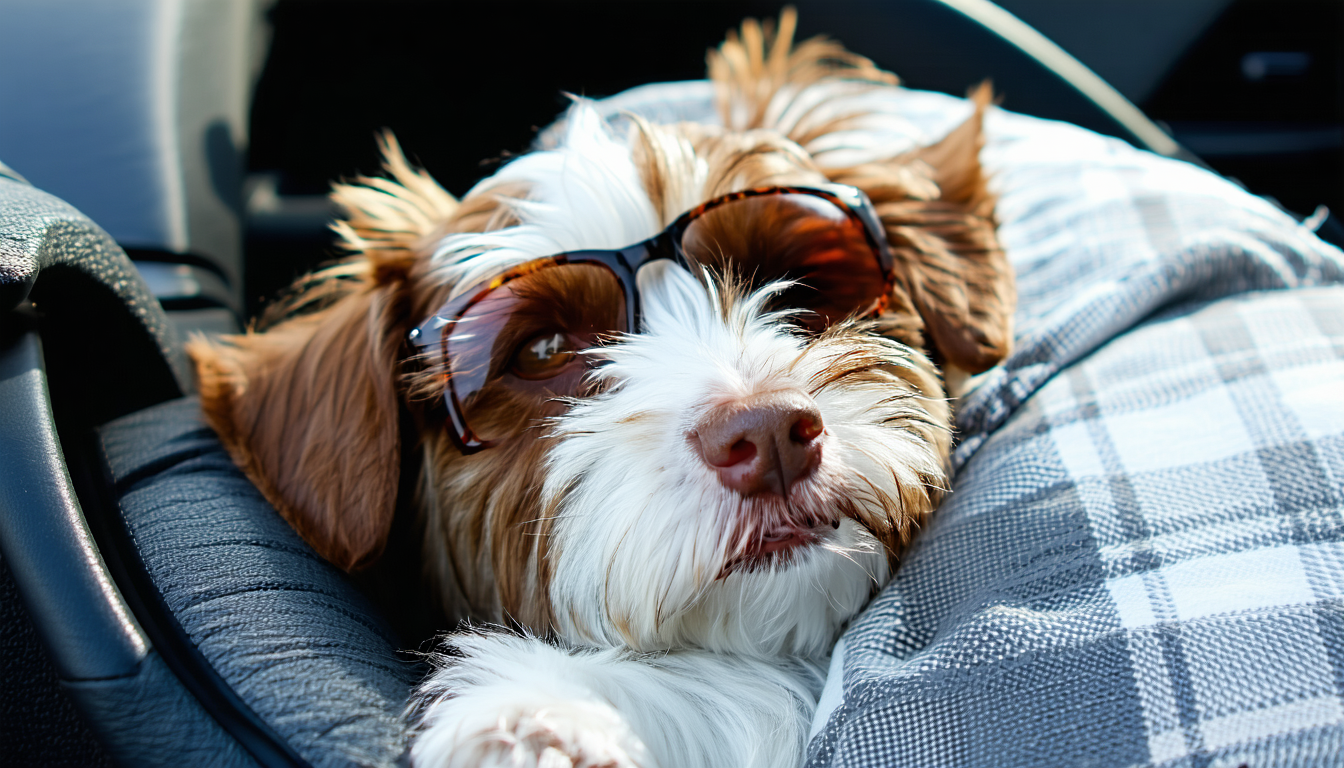Introduction — The Challenge and Promise of a Chill Guy Dog
Picture the joy of coming home to a dog whose relaxed energy instantly dissolves your stress. For many dog lovers, finding or raising a “chill guy dog”—one who greets life with calm curiosity rather than frantic excitement—can feel elusive. Amid the bustle of daily responsibilities, an overly active or anxious dog can add to household tension instead of relieving it.
You’re seeking a solution: actionable strategies, clear criteria, and evidence-backed steps to either choose or develop a laid-back canine companion. This comprehensive guide reveals what sets the chill guy dog apart, why these traits matter, and proven methods for living harmoniously with a balanced, easy-going pet.
What “Chill Guy Dog” Means — Defining the Laid-Back Canine Companion
The term “chill guy dog” describes a pet who exhibits relaxed, steady behavior both at home and in social settings. These dogs typically adapt well to routines, show patience in new situations, and don’t overreact to ordinary triggers or distractions. Breeds commonly associated with this temperament include basset hounds, greyhounds, bulldogs, and golden retrievers, but chill demeanor can be found in many individual dogs across breeds.
While the definition centers on behavior, it reflects more than laziness or low energy. A chill dog remains curious and engaged, yet self-possessed. They lie calmly near their owners, approach strangers without drama, and recover quickly from excitement. Two core elements—genetics and nurturing—shape this temperament.
Why It Matters for Dog Owners
A chill guy dog has benefits that stretch beyond the home. Owners enjoy less stress, easier travel, and more enjoyable social experiences—outcomes supported by research. According to the American Pet Products Association (APPA, 2021), 74% of pet owners report that a calm dog improves their mood and daily satisfaction. Calm canine companions also adapt more smoothly to apartment living and family routines, reduce the risk of behavior-driven injuries (American Veterinary Medical Association, 2020), and foster positive relationships with visitors and other pets.
For anyone seeking a peaceful home and harmonious life with their pet, understanding—and nurturing—the qualities of a chill guy dog is crucial.
Core Strategies for Finding or Raising a Chill Guy Dog
Every dog is unique, but science and experience point to several pillars for either selecting or developing a calm canine companion.

Pillar 1: Choose the Right Breed and Individual Temperament
Start by honestly assessing your lifestyle and living situation. Certain breeds—including English bulldogs, Shih Tzus, and Cavalier King Charles spaniels—are renowned for their low-key natures. However, within any breed, individual personality can differ dramatically. When possible, spend time with a dog outside a shelter or breeder’s facility to observe reactions to novel environments. Favor dogs who recover quickly from new sights and sounds, settle easily after brief excitement, and seek gentle attention.
Pillar 2: Early Socialization and Predictable Routines
Puppies and newly adopted dogs learn best in calm, structured environments. Early socialization—exposing the dog to a variety of sights, sounds, and people in safe, measured doses—helps shape resilient, chill adult behavior. Consistency in daily routines (feeds, walks, quiet time) builds trust and confidence, reducing anxiety-driven outbursts.
Pillar 3: Gentle Training Techniques and Positive Reinforcement
Harsh discipline breeds anxiety, not tranquility. Instead, prioritize positive reinforcement methods: reward calm behaviors with treats, praise, or play. Systematic desensitization—gradually introducing potentially stressful stimuli—teaches dogs how to recover from arousal. If a dog barks at the doorbell, reward quiet sitting once the excitement fades. This approach builds a cycle of calm responses.
Pillar 4: Appropriate Mental and Physical Exercise
Too little activity leads to pent-up energy and mischief; too much can create a perpetually “wired” dog. Chill guy dogs benefit from moderate daily walks, short training sessions, and enrichment toys that challenge their brains—not just their bodies. Look for signs of contentment: relaxed posture, soft eyes, and calm tail wagging.
Pillar 5: Health Checks and Comfort
Underlying discomfort or medical issues can trigger hyperactivity or irritability. Routine veterinary care ensures your dog feels physically secure—a prerequisite for emotional calm. Ensure your dog’s living environment is comfortable, with quiet spaces for downtime and a consistent schedule.
Monitoring Progress — Tools, Checks, and Metrics
Evaluate your dog’s chill factor using these methods:
– Behavior logs: Track barking, jumping, or anxiety incidents.
– Relaxation scores: Note time spent resting calmly in common areas.
– Recovery rate: Time taken to return to calm after excitement.
– Feedback: Ask friends or trainers to observe and note changes.
Adjust your approach based on observed trends, consulting professionals if needed.
Data and Proof — Key Numbers Behind Chill Dogs
Relevant Statistics
- Approximately 85% of dog owners say a calm dog leads to increased satisfaction with pet ownership (APPA, 2021).
- 60% of canine relinquishments to shelters stem from behavioral issues, with hyperactivity and anxiety among top reasons (ASPCA, 2020).
- Dogs receiving early socialization are 67% less likely to develop adult behavior problems (Journal of Veterinary Behavior, 2019).
What These Numbers Imply
For owners, these data points underscore the importance of both natural temperament and proactive management. Having a chill guy dog not only makes daily life more pleasant, but reduces the risk of giving up a pet due to preventable behavioral challenges. Early intervention and structured routines are especially powerful for long-term harmony.
Practical Examples of Chill Guy Dogs in Action
Example A: From Rowdy Rescue to Zen Companion
Consider Jackson, a mixed-breed rescue who arrived at a foster home with signs of anxiety and overexcitement. Through six weeks of gentle exposure to household noises, predictable meal times, and reward-based training for quiet behaviors, Jackson transformed. His foster reported a 75% reduction in barking and destructive behavior, eventually leading to a successful adoption into a family seeking a laid-back companion.
Example B: Breed Matters—But Isn’t Everything
Contrast this with Daisy, a purebred bulldog, traditionally seen as a low-key breed. Daisy, raised in a chaotic household without structure, developed anxious habits and reactivity to visitors. After her new owner implemented a schedule and provided mental enrichment, Daisy’s behavior improved, illustrating that while genetics matter, environment and routine shape the chill guy dog you experience.
Common Mistakes and How to Avoid Them
- Assuming Breed Predicts All: While some breeds are predisposed to calmness, any dog can become anxious or hyperactive without guidance.
- Neglecting Socialization: Missing the puppy socialization window or failing to expose adult dogs gently to the world can lock in fearful or excitable behaviors.
- Over- or Under-Exercising: Too much stimulation can keep a dog on edge; too little leaves energy to burn through mischief.
- Inconsistent Rules: Changing expectations confuse dogs, eroding their sense of security.
- Ignoring Medical Causes: Sudden behavioral changes often signal pain or discomfort, not “bad personality.”
Avoiding these pitfalls protects your chances of nurturing or maintaining a truly laid-back companion.
Implementation Checklist: Building the Chill Guy Dog
- Assess temperament before choosing or adopting—look for calm recovery from excitement.
- Establish a routine early—predictable schedules build security.
- Prioritize daily socialization, exposing your dog to new stimuli in small, positive doses.
- Use positive reinforcement—reward calm, desired behaviors.
- Balance activity—provide moderate exercise and mental enrichment.
- Create quiet zones—set up spaces for your dog to relax and decompress.
- Monitor health—schedule regular check-ups and promptly address concerns.
- Track progress—keep notes on behavior and make adjustments as needed.
Conclusion — Takeaways and Next Steps for Owners
Living with a chill guy dog isn’t only luck or genetics: it’s the outcome of informed selection, patient training, structured routines, and attentive care. The right dog—paired with the right approach—provides comfort, companionship, and effortless joy. By understanding what defines the chill guy dog, putting data-backed strategies into practice, and learning from both success and struggle, owners set the stage for years of peaceful, balanced canine friendship.
Ready to begin? Start by assessing your own living situation and the temperament of your current or prospective dog. Small steps, repeated with consistency and compassion, yield the tranquil bond you desire.
FAQs
What makes a chill guy dog different from other dogs?
A chill guy dog is defined by calm energy, predictable behavior, and a relaxed approach to daily events. This temperament is shaped by both genetics and environment.
Can any dog become a chill guy dog with training?
While training and socialization significantly influence behavior, some dogs are naturally more energetic or reactive. However, most dogs can achieve greater calm with structured routines and positive reinforcement.
Which breeds are usually considered chill guy dogs?
Breeds like bulldogs, basset hounds, and greyhounds are often associated with laid-back temperaments, but individual personality matters even more than breed.
How do I measure progress toward having a chill guy dog?
Track behaviors such as time spent resting, response to excitement, and frequency of unwanted actions. Regular feedback from trainers or peers is also useful.
What if my dog is suddenly less chill than usual?
Sudden changes in behavior may indicate health issues. Schedule a veterinary check-up to rule out pain or discomfort before addressing with training.
Is it ever too late to help my dog become a chill guy dog?
Dogs can learn new behaviors at any age. While puppies adapt quickly, adult and senior dogs also benefit greatly from routines, enrichment, and positive guidance.












Leave a comment